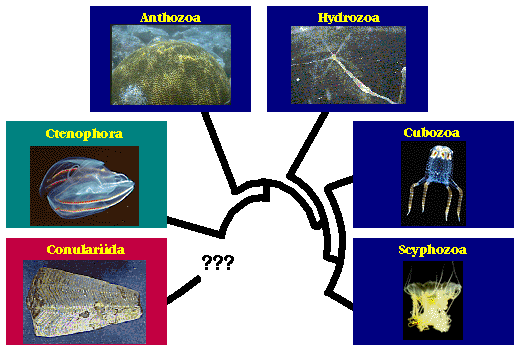



Cnidaria: Systematics

Cnidarians present particular problems for systematists. Their comparatively simple morphology makes it difficult to compare taxa. The fossil record of soft-bodied cnidarians is very sparse, although the record of corals and other mineralizing cnidarians is excellent. Few molecular phylogenetic analyses so far have examined the Cnidaria in great detail.
Traditionally, it was thought that the Hydrozoa were the most primitive cnidarians. However, a recent cladistic analysis (Schuchert, 1993) and avaliable molecular data suggest that the Anthozoa, the only group of living cnidarians that completely lacks a medusoid "jellyfish" stage in the life cycle, are in fact most primitive. This seems consistent with the fossil record of the Cnidaria, but further studies will be needed to refine this picture of cnidarian evolution.
The phylum Ctenophora, which includes the "comb jellies," "sea gooseberries," and "Venus's girdles," is not currently considered to be part of the Cnidaria; however, the two are close relatives. The Cnidaria and Ctenophora are grouped together by some workers as the Coelenterata.
Source:
- Schuchert, P. 1993. Phylogenetic analysis of the Cnidaria. Zeitschrift fur zoologische Systematik - und Evolutionsforschung 31:161-173.
